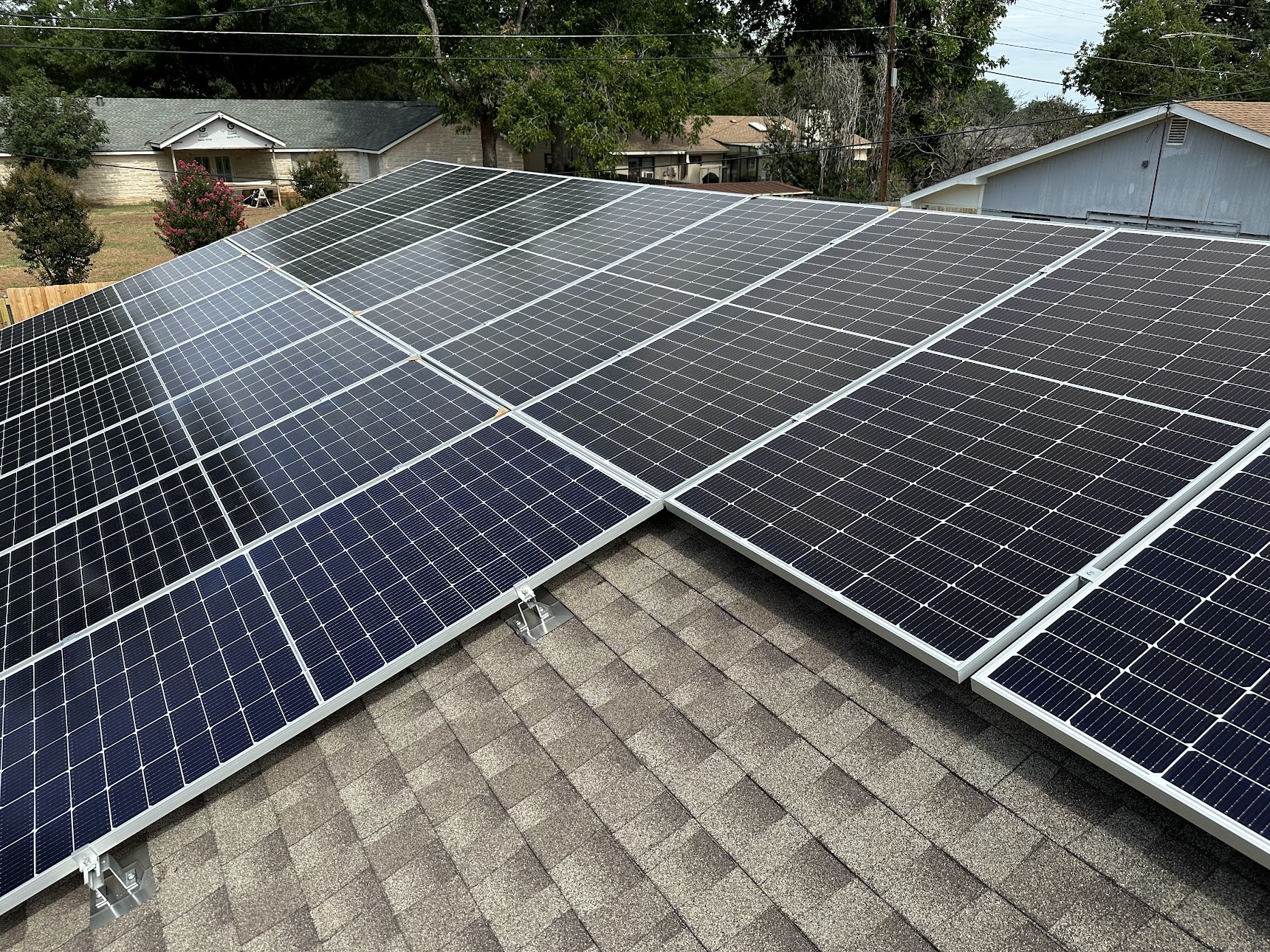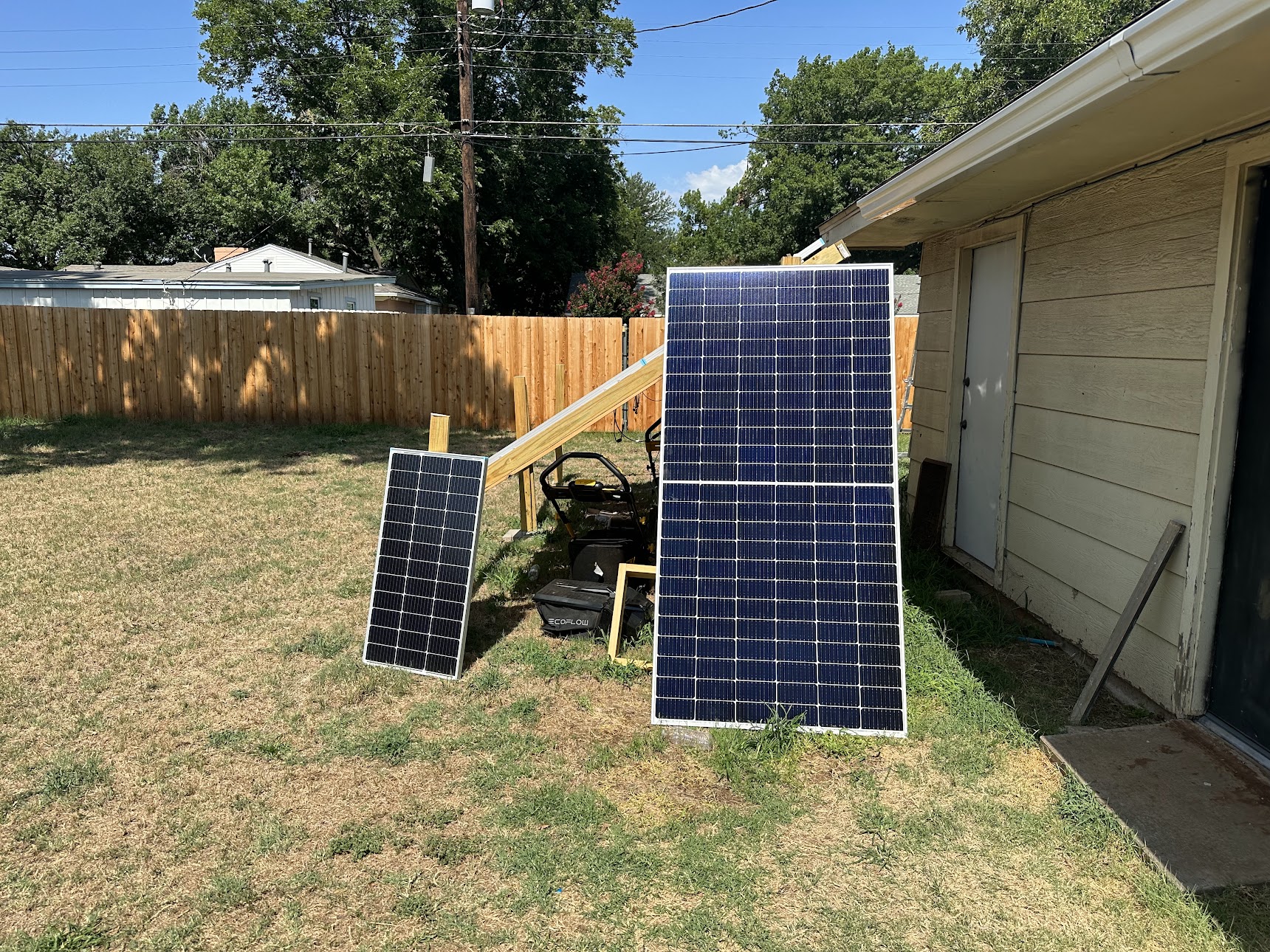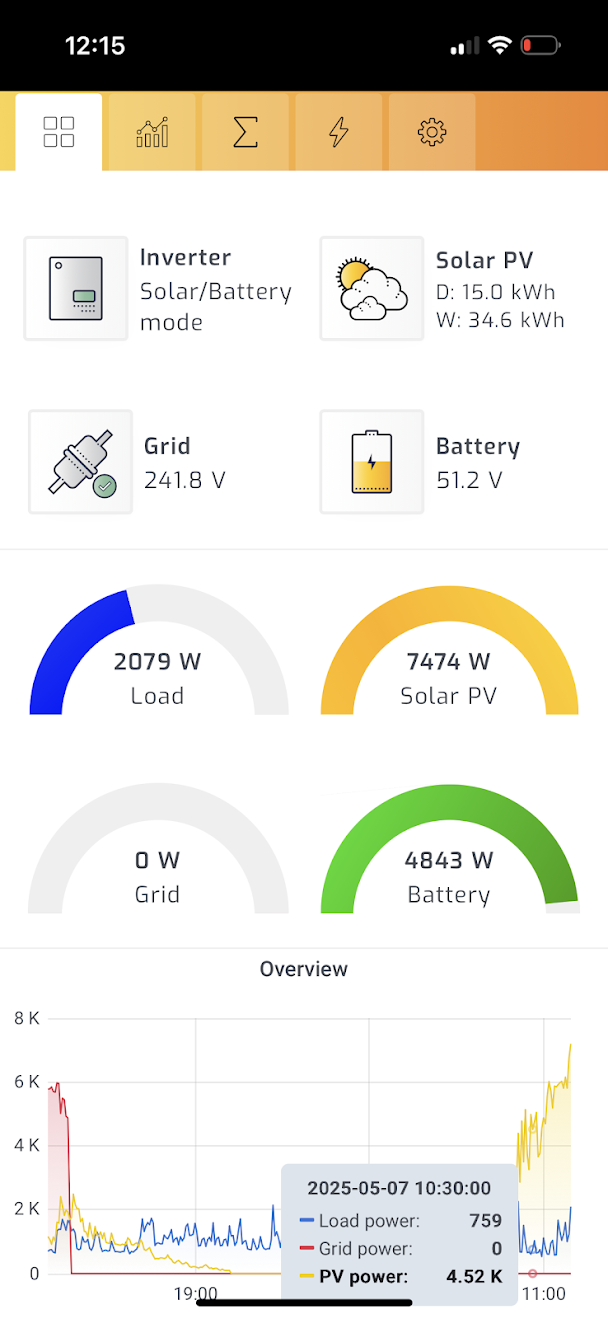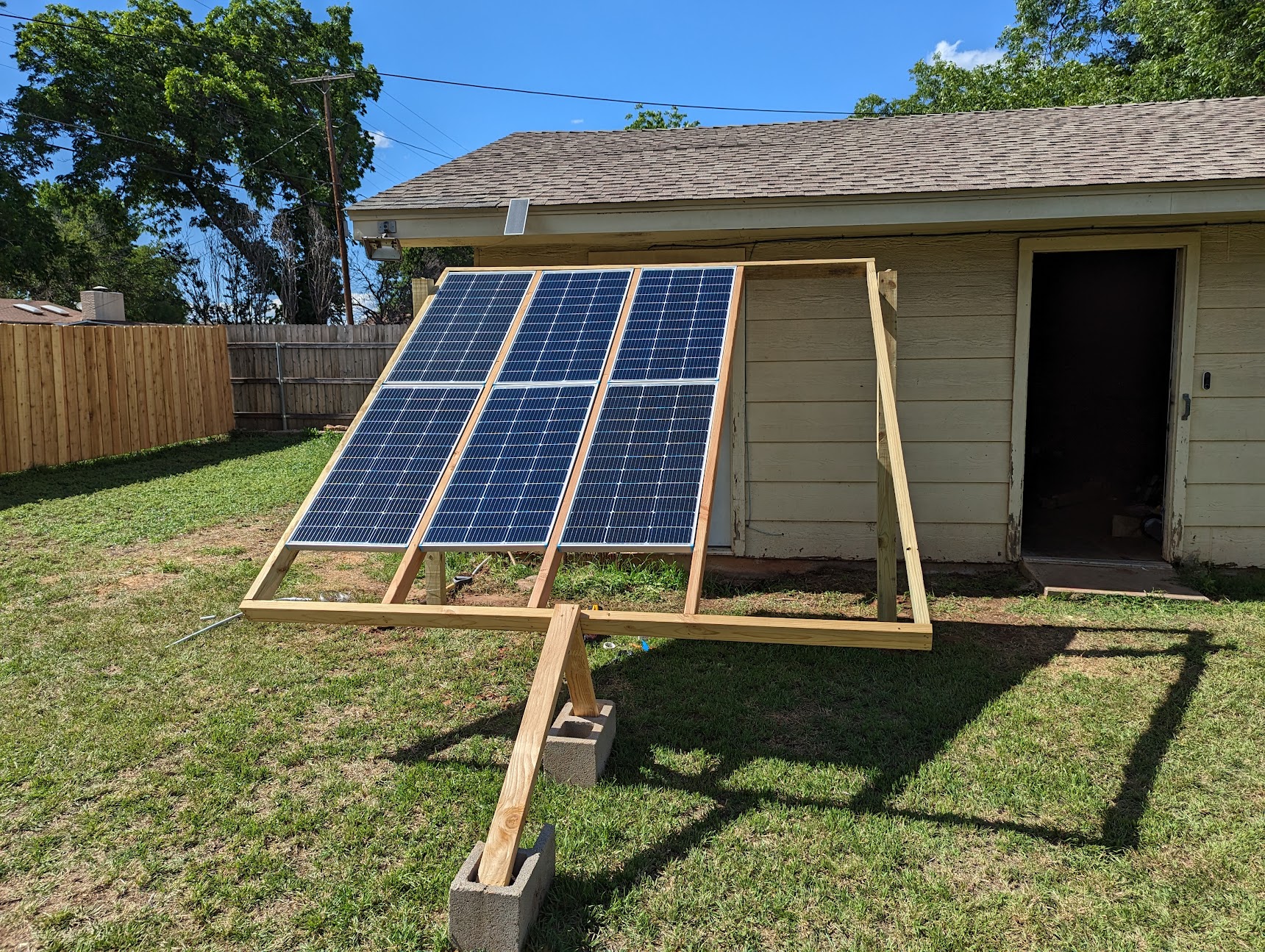DIY Solar Power: Building a 7.2kW Off-Grid System
June 2025
Going solar isn't just about environmental responsibility—it's about energy independence, cost savings, and the satisfaction of building something that powers your life. Here's how I designed and installed a complete 7.2kW solar system on my garage roof, complete with battery storage and smart grid integration.

The final installation: 16 Solarever 455W panels on the roof generating 7.2kW of clean power
System Overview
My solar setup is designed for maximum efficiency and reliability. The system generates enough power to cover my home's daytime needs while storing excess energy for night use and emergency backup.
Key Specifications
- Solar Array: 16x 455W Solarever monocrystalline panels = 7.28kW total
- Inverters: 2x EG4 6000XP hybrid inverters (12kW total capacity)
- Battery Storage: 6x Rich Solar Gen 1 batteries in Rich Solar cabinet rack
- Grid Integration: Connected but no sell-back (consumption only)
- Smart Charging: Green Mountain Energy free nights program integration
Panel Installation and Wiring
The heart of any solar system is the panel array. I chose Solarever 455W monocrystalline panels for their excellent efficiency and reliability. Mounting them myself on the garage roof was both challenging and rewarding.

Size comparison: 100W Renogy panel (left) vs 455W Solarever panel (right) - a significant upgrade in power density
String Configuration
The 16 panels are wired in two strings of 8 panels each. This configuration provides:
- Redundancy: If one string has issues, the other continues producing
- Optimal Voltage: 8 panels per string delivers ideal voltage for the MPPT controllers
- Load Distribution: Each string feeds MPPT1 on separate EG4 6000XP inverters
Safety First: Professional-Grade Wiring
While I did the installation myself, I followed NEC code requirements throughout:
- MC4 connectors for all panel connections
- Properly rated DC wiring with appropriate gauge for current load
- Grounding equipment bondng for all metallic components
- Rapid shutdown devices for code compliance
Power Management and Storage
The EG4 6000XP inverters are the brains of the operation. These hybrid units handle solar input, battery charging/discharging, and grid integration seamlessly.
Battery Configuration
My battery setup prioritizes safety and expandability:
- 6x Rich Solar Gen 1 batteries in series-parallel configuration
- Rich Solar battery cabinet rack for organization and ventilation
- T-class fuse on positive lead for overcurrent protection
- 1000A busbars for each inverter to battery connection
- DC disconnect switches for safe maintenance

Real-time monitoring showing impressive efficiency: 7474W panel output with 4843W charging batteries and 2079W powering loads
Smart Grid Integration
While my system is grid-tied, I don't sell power back to the utility. Instead, I use a smart consumption strategy that maximizes my savings.
Green Mountain Energy Free Nights
This is where the system gets really clever. Green Mountain Energy offers free electricity from 8PM to 6AM, which I use strategically:
- Battery charging: When batteries drop to 20%, they charge from the grid during free hours
- Tesla charging: My Tesla is scheduled to charge after 8PM during the free window
- High-consumption appliances: Can run at any time
Performance and Economics
The numbers don't lie—this system delivers both environmental and financial benefits.
Daily Performance
- Peak Generation: Up to 7.2kW on sunny days
- Average Daily Production: 35-40 kWh in summer, 20-25 kWh in winter
- Battery Autonomy: 2-3 days of backup power during outages
- Grid Independence: 80%+ of daily consumption from solar
Cost Savings
- Eliminated daytime grid usage except during extended cloudy periods
- Free overnight charging for both batteries and Tesla
- Backup power eliminates generator fuel costs during outages
- ROI timeline: Expected payback in 6-8 years
Lessons Learned
Building a solar system yourself is incredibly rewarding, but there are important considerations:
What Went Right
- Thorough planning: Spent months researching components and system design
- Quality components: Invested in reliable inverters and batteries
- Proper safety measures: Multiple disconnect points and overcurrent protection
- Grid integration strategy: Free nights program maximizes savings
Challenges and Solutions
- Roof work is hard: Take your time, use proper safety equipment
- Permitting process: Work with local authorities early in planning
- Weather dependency: Battery storage mitigates production variability
- Initial cost: Think long-term comfortability, not upfront expense
Future Expansion Plans
The beauty of a well-designed system is its expandability. My next phases include:
- Additional battery capacity: Room for more battery cabinets in the power room
- EV charging optimization: Smart scheduling based on solar production
- Home automation integration: Smart switches for load management

My original setup with 16 Renogy 100W panels - now repurposed to power my 24000BTU solar mini split that keeps my workshop comfortable
The Bottom Line
Solar power isn't just about saving money—it's about energy independence, environmental responsibility, and the satisfaction of building something that works. Every sunny day, I watch my system generate clean power, charge my Tesla for free, and live comfortably.
If you're considering solar, don't let the complexity scare you. Start with research, plan carefully, and don't hesitate to hire professionals for the electrical connections if you're not comfortable. The investment in clean, renewable energy pays dividends far beyond the monthly electric bill.
The future is electric, and it's powered by the sun.